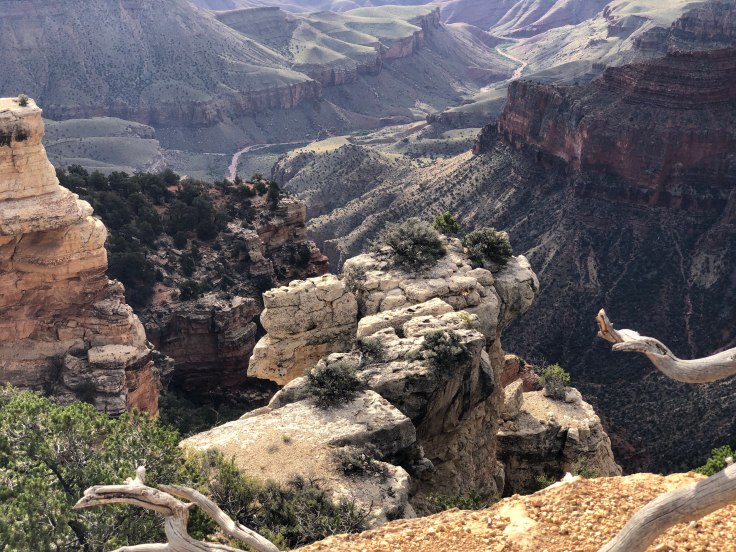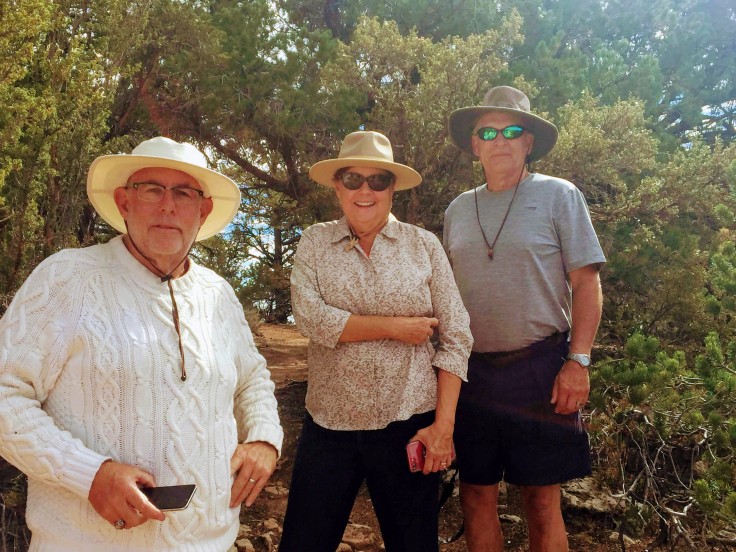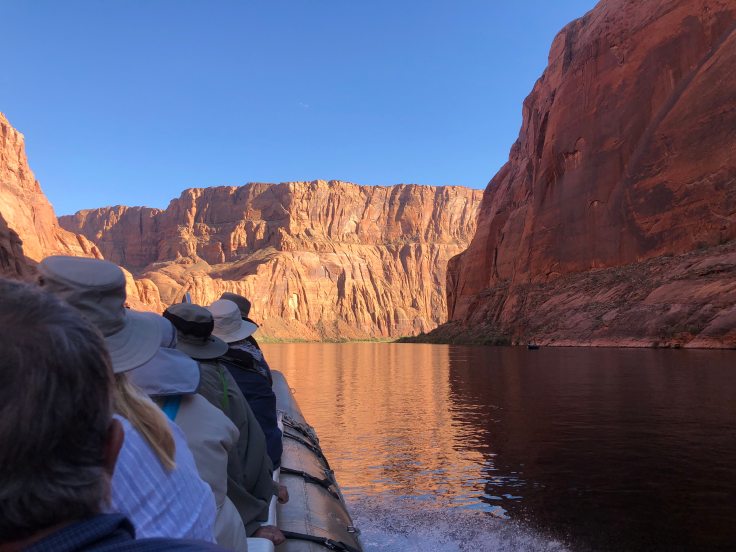
Another busy day on the caravan…
We began with a tour of the Glen Canyon Dam…
Glen Canyon Dam is a concrete arch-gravity dam on the Colorado River, near the town of Page. The 710-foot high dam was built by the U.S. Bureau of Reclamation (USBR) from 1956 to 1966 and forms Lake Powell, one of the largest man-made reservoirs in the U.S. with a capacity of 27 million acre feet. The dam is named for Glen Canyon, a series of deep sandstone gorges now flooded by the reservoir; Lake Powell is named for John Wesley Powell, who in 1869 led the first expedition to traverse the Colorado’s Grand Canyon by boat. You will remember that we saw the Powell Museum in Green River, UT.
Because the dam site was in a remote, rugged area of the Colorado Plateau – more than 30 miles from the closest paved road, U.S. Route 89 – a new road had to be constructed, branching off from US 89 north of Flagstaff, Arizona, and running through the dam site to its terminus at Kanab, Utah. Because of the isolated location, acquiring the land at the dam and reservoir sites was not particularly difficult, but there were a few disputes with ranchers and miners in the area (many of the Navajo Nation). Much of the land acquired for the dam was through an exchange with the Navajo, in which the tribe ceded Manson Mesa south of the dam site for a similar-sized chunk of land near Aneth, Utah, which the Navajo had long coveted. (Tomorrow we will meet descendants of the Navajo man named Manson. Stay tuned…)
One of the first acts of construction was a suspension footbridge made of chicken wire and metal grates. At the time it was the only way to cross Glen Canyon. Vehicles had to make a 225-mile journey in order to get from one side of the canyon to the other. A road link was urgently needed in order to safely accommodate workers and heavy construction equipment. A steel arch bridge was built; construction began in late 1956, reaching completion on August 11, 1957. When finished, the steel arch Glen Canyon Bridge was itself a marvel of engineering: at 1,271 feet long and rising 700 feet above the river, it was the highest bridge of its kind in the United States and one of the highest in the world. The bridge soon became a major tourist attraction. The March 1959 issue of LIFE reported that “motorists [were] driving miles out of their way just to be thrilled by its dizzying height.”
During the construction of the Glen Canyon Bridge, the USBR also began planning a company town to house the workers. This resulted in the town of Page, Arizona, named for former Reclamation Commissioner John C. Page. By 1959, Page had a host of temporary buildings, electricity, and a small school serving workers’ children. As the city grew, it gathered additional features, including numerous stores, a hospital, and even a jeweler.
Prior to and during construction, three separate grants were issued by the National Park Service to document and recover artifacts of historical cultures along the river. These went to University of Utah historian C. Gregory Crampton and anthropologist Jesse Jennings, and to the Museum of Northern Arizona. Crampton subsequently wrote several books and articles on his findings.
We walked atop the dam, viewing the bridge above and the river below…

The visitors center perches atop the canyon rim above the dam…

Lake Powell behind the dam…


As the giant pipes carry water from the lake to the power plant at the bottom of the dam, the water forms such a turbulent force that the pipes vibrate and shake and would destroy anything rigid that seeks to contain them… Therefore, they covered the pipes with gravel, sand, and finally grass that would give pride to any golf course…

From the bottom of the dam we looked up to see the visitors center…


This is the water that seeps through the concrete that makes up the dam – about 1,600 gallons per minute…

The power plant – 8 giant turbine generators providing electricity for the surrounding states…

We can see Lake Powell stretching over 186 miles up-stream…
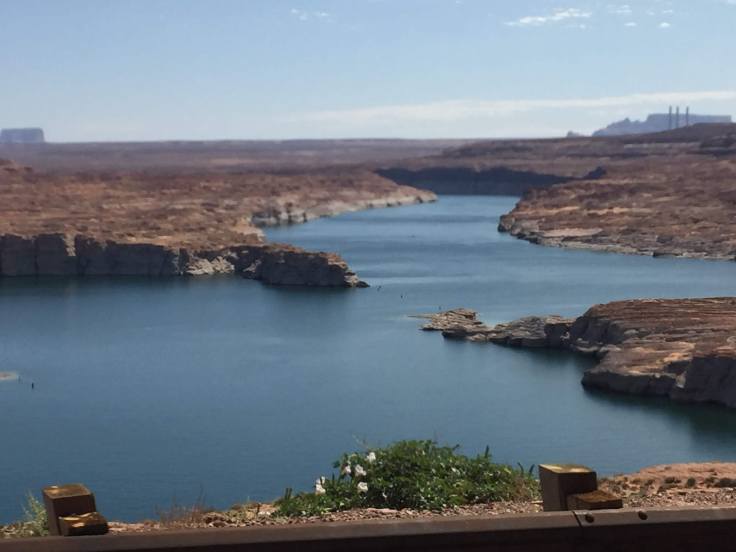

Interesting facts: See the tunnel entrance in the canyon walls beyond the power plant?

The tunnel is two miles long and it extends from the power plant at the river to the rim of the canyon above. It took two years to build, and it was necessary to get equipment to the dam foundations and to the power plant…
Stay tuned for more information… This afternoon we will travel through this tunnel…
It was an interesting tour, as all dam tours are…
We returned to the Villa in time to turn around and head out for our raft trip on the Colorado River. We will be starting just below the dam and we will be going down the river about 16 miles to Lee Ferry. This is a quiet stretch of the river. Rapids in rivers such as the Colorado are rated from 1-10, with 10 being the biggest. The “rapids” on this portion of the river are about .3!
We met at the Raft Tour office in Page. After the Homeland Security check we boarded a bus (salvaged from LA Unified School District in 1959) to ride to the river. Why a Homeland Security check? We get to ride in our bus down the two mile long tunnel and park at the foot of the dam. We were admonished not to take pictures in the tunnel, of the tunnel, or anywhere around the tunnel. Nor were pictures allowed of the wharf at the foot of the dam. The bus parked with its door directly adjacent to the ramp down to the dock. We even had to wear hard hats! Apparently people on the bridge overhead like to throw things off the bridge! Who knew? So we left the bus and boarded the rafts…
We were allowed to take pictures of the river and the bridge overhead…




We boarded the rafts and away we went…


The first thing we noticed were these holes in the canyon walls… They are “windows” into the tunnel. (about 15 feet diameter…) We could follow them along the two miles, as they rose up to the canyon rim… They used these holes for ventilation, and to push the debris out, where it fell to the river below…

All along the river we had fabulous views of the canyon walls. They extend up above the river to a height of about 500 feet at the dam to over 1,000 feet at Lee Ferry. In contrast, the rim of the Grand Canyon is about one mile, over 5,000 feet, above the river… We took literally hundreds of pictures. I’ll only show a few…





The “rapids”…




Camping is allowed along the river, at about 10-12 sites. Obviously, you must boat or kayak in, and pitch a tent… Restrooms are provided…

Rocks…

 We stopped at one point to stretch our legs and hike up a short distance to see some petroglyphs…
We stopped at one point to stretch our legs and hike up a short distance to see some petroglyphs…



We re-boarded the rafts and continued on our way…



Our pilot, guide, and expert on all things Navajo…




There is a fault that runs across the river – these rocks are virtually identical, on opposite sides of the river…









We arrived at the end of the trip… Our school bus was waiting to take us back to the offices in Page… The end of our trip, Lee Ferry, is a departure point for 4-7 day white-water rafting trips through the Grand Canyon and beyond… It sounded like fun!
We returned to the Villa quite exhausted. However, we did have enough energy to spend a few happy hours chatting with another Airstream couple from North Carolina.
And an enjoyable time was had by all…

























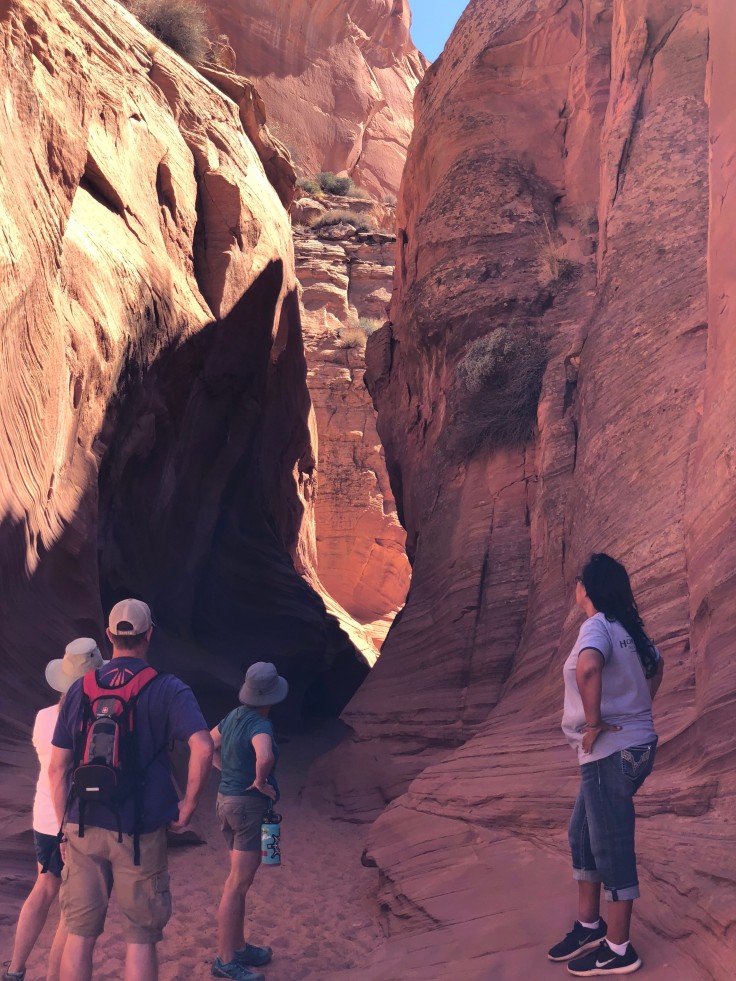






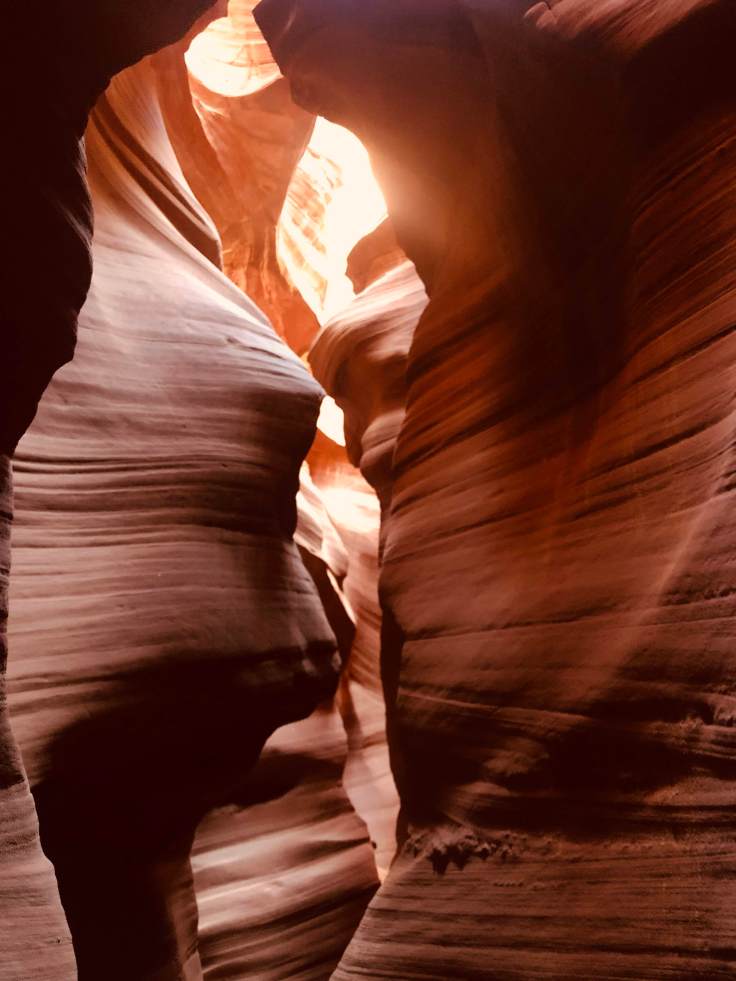






















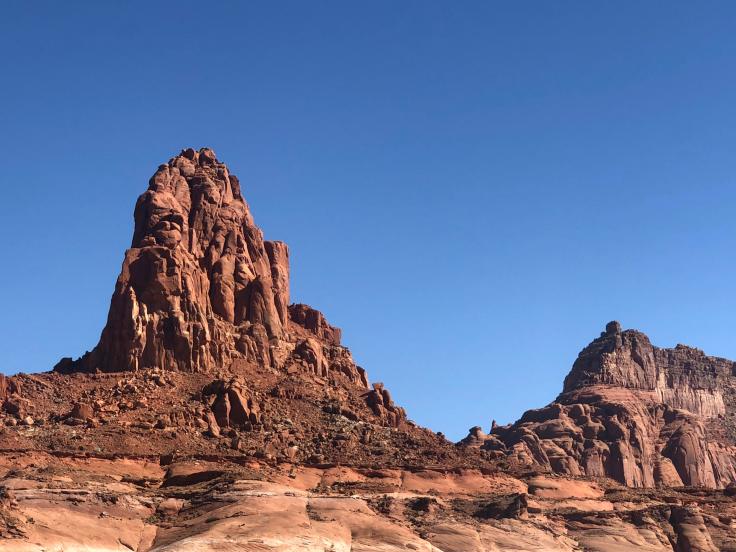









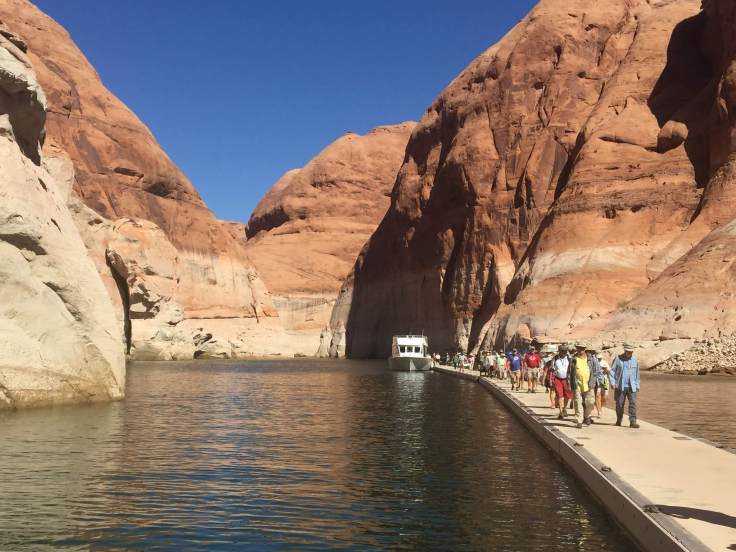









































 We stopped at one point to stretch our legs and hike up a short distance to see some petroglyphs…
We stopped at one point to stretch our legs and hike up a short distance to see some petroglyphs…
































































